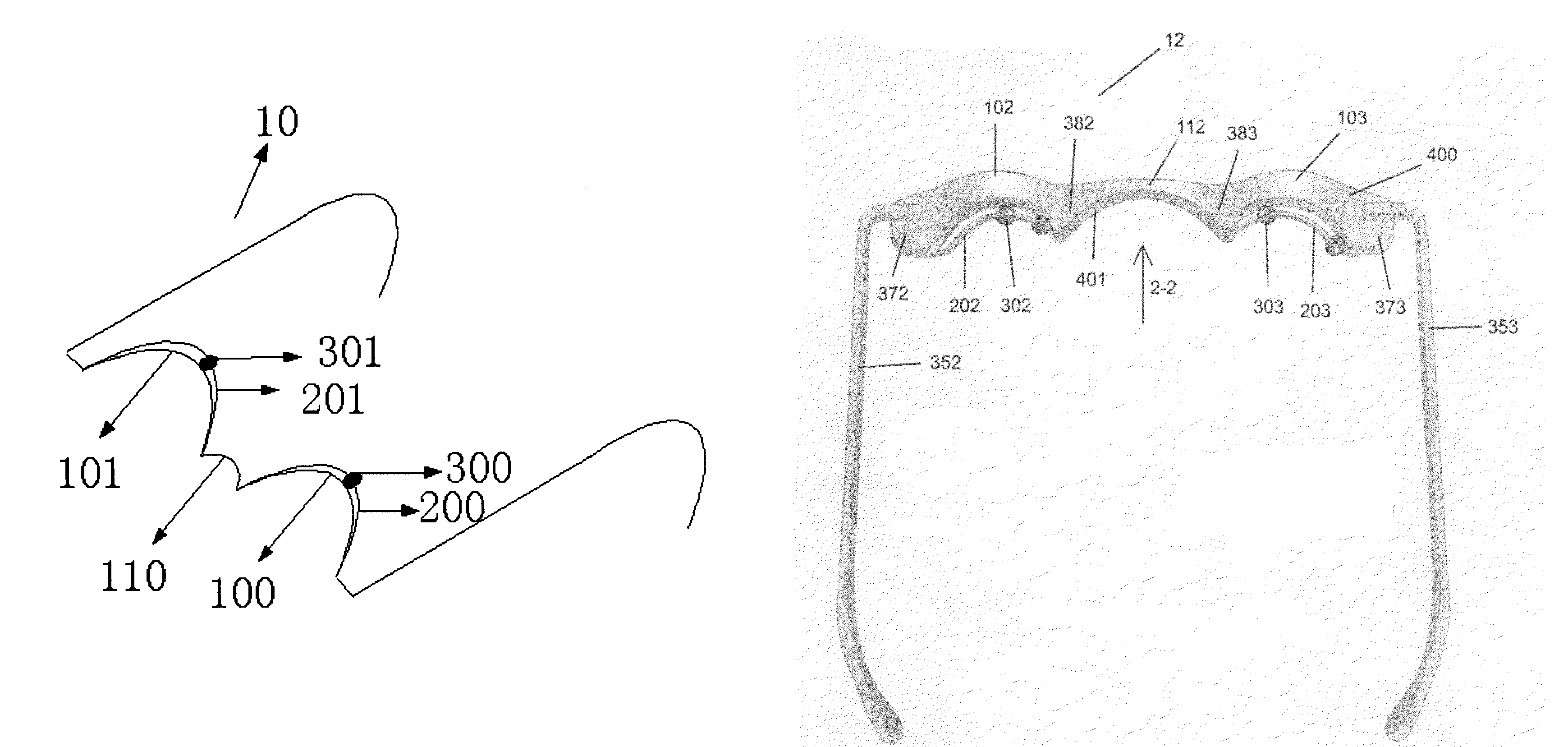Double eyelid forming devices
a technology of eyelids and forming devices, which is applied in the field of double eyelid forming devices, can solve the problems of creases in the eyelids, high cost, pain and risk, and surgery, and achieve the effect of reducing the risk of surgery
- Summary
- Abstract
- Description
- Claims
- Application Information
AI Technical Summary
Benefits of technology
Problems solved by technology
Method used
Image
Examples
first embodiment
[0011]Referring to FIG. 1, the device, 10, is shown in the shape of a set of regular eyeglasses. The lower rim and lens can be omitted for simplicity. The upper rim consists of the left rim 100 and the right rim 101 separated by the bridge 110. Two strings, 200 and 201, running along the curvature of the upper rim, are attached to the left rim, 100, and the right rim, 101, respectively, on the side of the glasses facing the wearer's eyes. The two ends of the strings are fixed to the rim and the portion of the strings between the two ends is detached from the rim. At least one bead, 300 and 301, having at least one through hole (not shown), is threaded onto each of the string and can slide along the string between the two ends. The beads rest on the upper rim along the whole sliding trajectory and protrude from the plane of the upper rim toward the wearer's upper eyelids.
[0012]When the eyeglasses of the first embodiment are worn by the user for creating double eyelids, the beads are ...
second embodiment
[0014]the device is shown in FIGS. 2A and 2B. FIG. 2A shows a top view of the device 12, in the shape of a set of regular eyeglasses with the lower rim and lens omitted for simplicity. FIG. 2B shows a back view of the device 12, viewed along the direction 2-2 in the eyes of the wearer. The upper rim consists of the left rim 102 and the right rim 103 separated by the bridge 112. It can be appreciated from the drawings that both rims have a curvature that conforms to the contour of the wearer's upper eyelid. A surface 400 of the upper rims is semi-horizontal except for the curvature. Two rigid wires, 202 and 203, positioned over the surface 401 which faces the wearer and running along the same curvature / contour, are attached to the left rim, 102, and the right rim, 103, respectively. The two ends of the wires are fixed to the rim and the portion of the strings between the two ends is detached from the rim. As shown in FIG. 2A, the ends of the wires which are adjacent to the bridge 112...
third embodiment
[0015]the device is in the form of fully functional eyeglasses, complete with lens and other parts. The strings and beads are attached to the upper rim of fully functional eyeglasses. The wearer can create the desired crease in the upper eyelids when the glasses are worn for daily activities, so long as the beads are positioned and pressed against the upper eyelids of the wearer.
PUM
 Login to View More
Login to View More Abstract
Description
Claims
Application Information
 Login to View More
Login to View More - R&D
- Intellectual Property
- Life Sciences
- Materials
- Tech Scout
- Unparalleled Data Quality
- Higher Quality Content
- 60% Fewer Hallucinations
Browse by: Latest US Patents, China's latest patents, Technical Efficacy Thesaurus, Application Domain, Technology Topic, Popular Technical Reports.
© 2025 PatSnap. All rights reserved.Legal|Privacy policy|Modern Slavery Act Transparency Statement|Sitemap|About US| Contact US: help@patsnap.com



